Sea Duck, Tree Duck
Plunging populations in 10 of our 15 sea duck species have raised an alarm among waterfowl biologists. They need to know more about the ecology, population dynamics, and threats to the health of this least understood group of ducks. Species, such as king eiders, oldsquaws, and harlequin ducks, are so specialized for life in salt water that their natural history differs markedly from that of most waterfowl. Reversing their decline will require unique conservation approaches.
Wildlife agencies across North America have recognized four main threats to sea ducks: lack of knowledge about their ecology, contaminants, unsustainable hunting, and habitat loss and degradation. They have also identified the need for concerted research, monitoring, and management action to conserve populations. Partner agencies within the North American Waterfowl Management Plan recently launched a Sea Duck Joint Venture to save these waterfowl.
You can participate by doing projects to conserve breeding areas, migratory stopovers, and wintering sites. Such threats as logging, fuel-wood harvesting, and land developments have left many cavity-nesting sea ducks (namely, mergansers, goldeneyes, and buffleheads) out in the cold. These birds breed in tree hollows dug by woodpeckers near inland swamps, ponds, lakes, and creeks — habitats that are rapidly disappearing.
Do your part to solve the sea duck crisis by conserving these sites and by placing nest boxes along wooded shorelines.
- Build nesting structures out of weather-resistant wood, preferably cedar, with the roof sloping downward and overlapping at the front and back.
- The box should be 60 cm deep; the floor 30 x 30 cm; the entrance hole oval and 46 cm above the floor — 8 cm high x 10 cm wide for hooded mergansers, 10 x 13 cm for common mergansers, and 9 x 12 cm for common and Barrow’s goldeneyes. For buffleheads, the box should be 45 cm deep; the floor 18 x 18 cm; the entrance hole round, 35 cm above the floor, and 7.5 cm in diameter.
- Attach an 8-cm-wide strip of wire mesh on the inside front panel of the structure for ducklings to climb to the entrance hole.
- Line the inside with cedar shavings 10 cm deep.
- Mount the box on an isolated tree (3 to 6 m high) facing the water’s edge or on a post 1.2 to 1.8 m above water, with no obstructions near the entrance. To deter raccoons, install a baffle or aluminum sheet around the base of the tree-trunk or pole.
- Angle the structure slightly forward to make it easier for ducklings to climb out.
- As a rule, install two nesting boxes per hectare of wetland.
- Inspect, clean, and line the box with fresh wood shavings each fall.












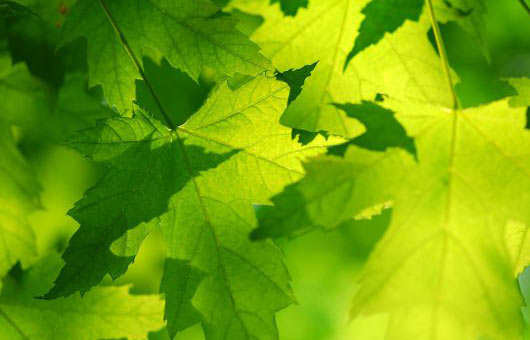
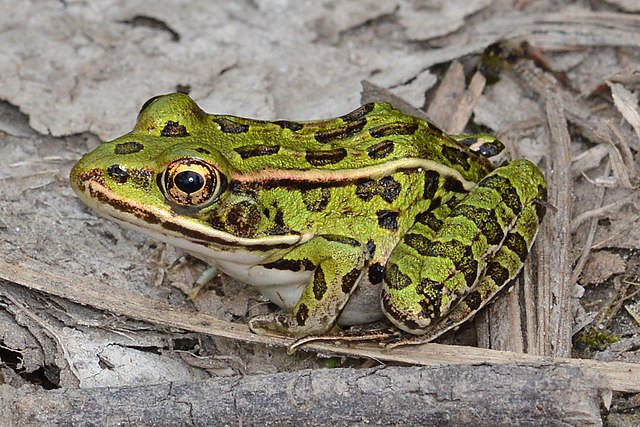
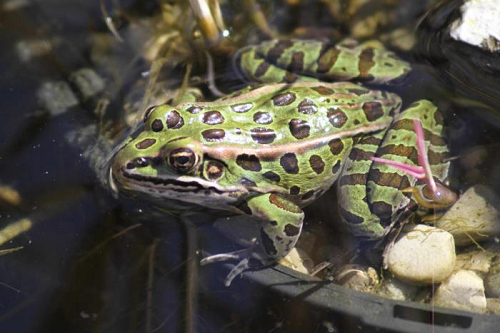
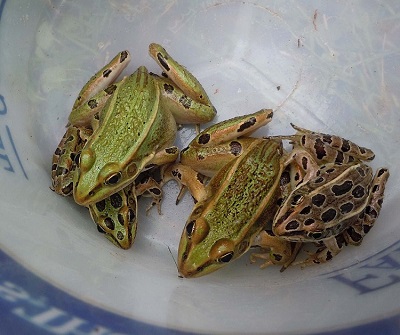
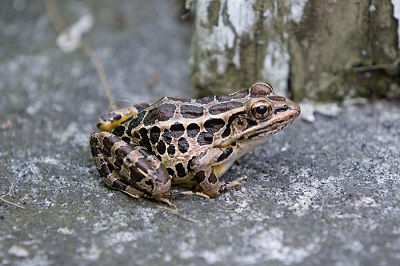

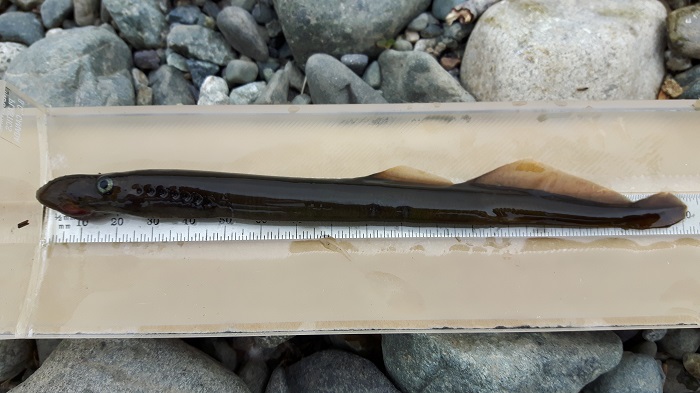
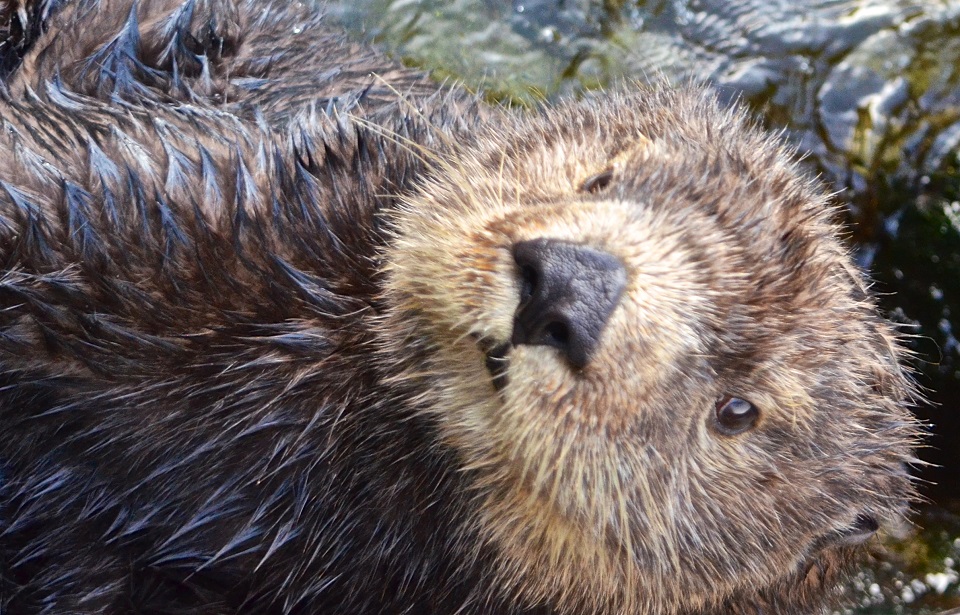

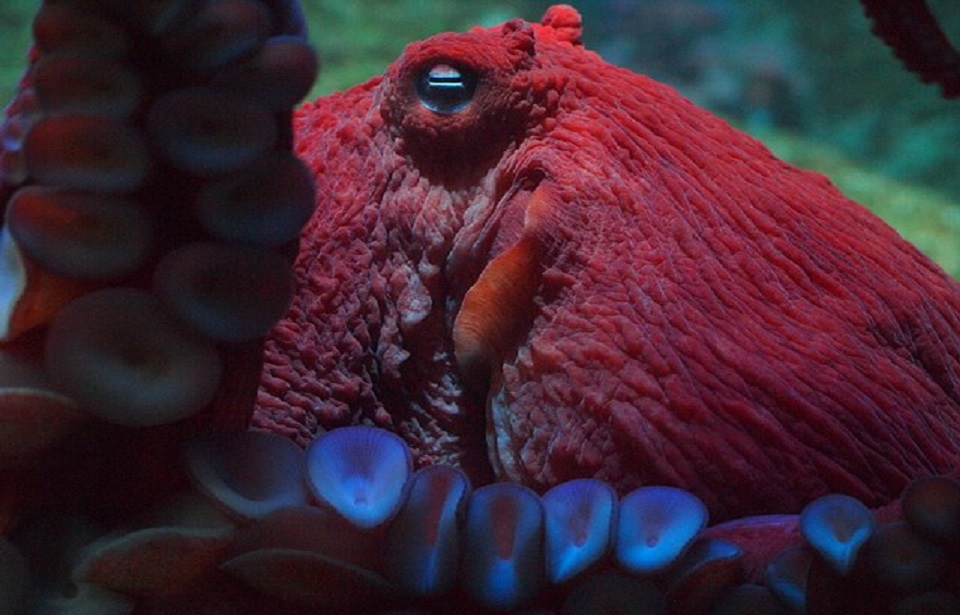
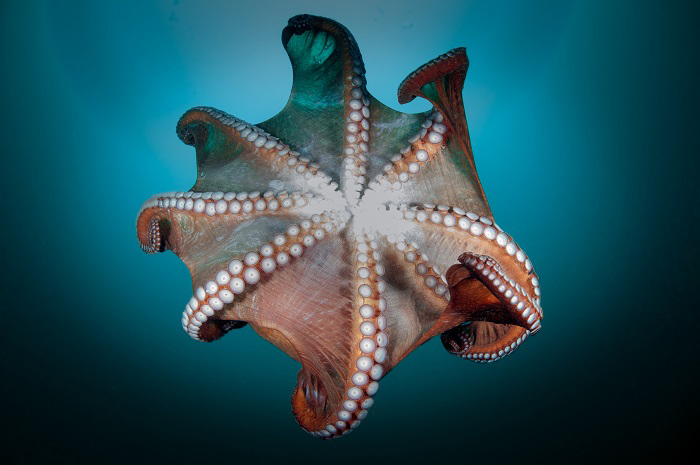

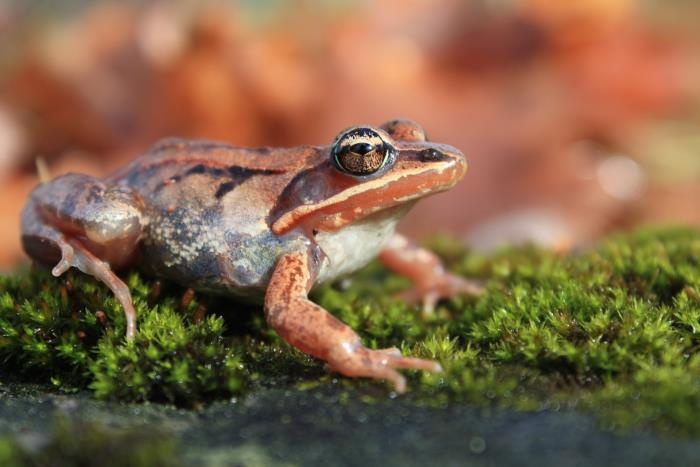

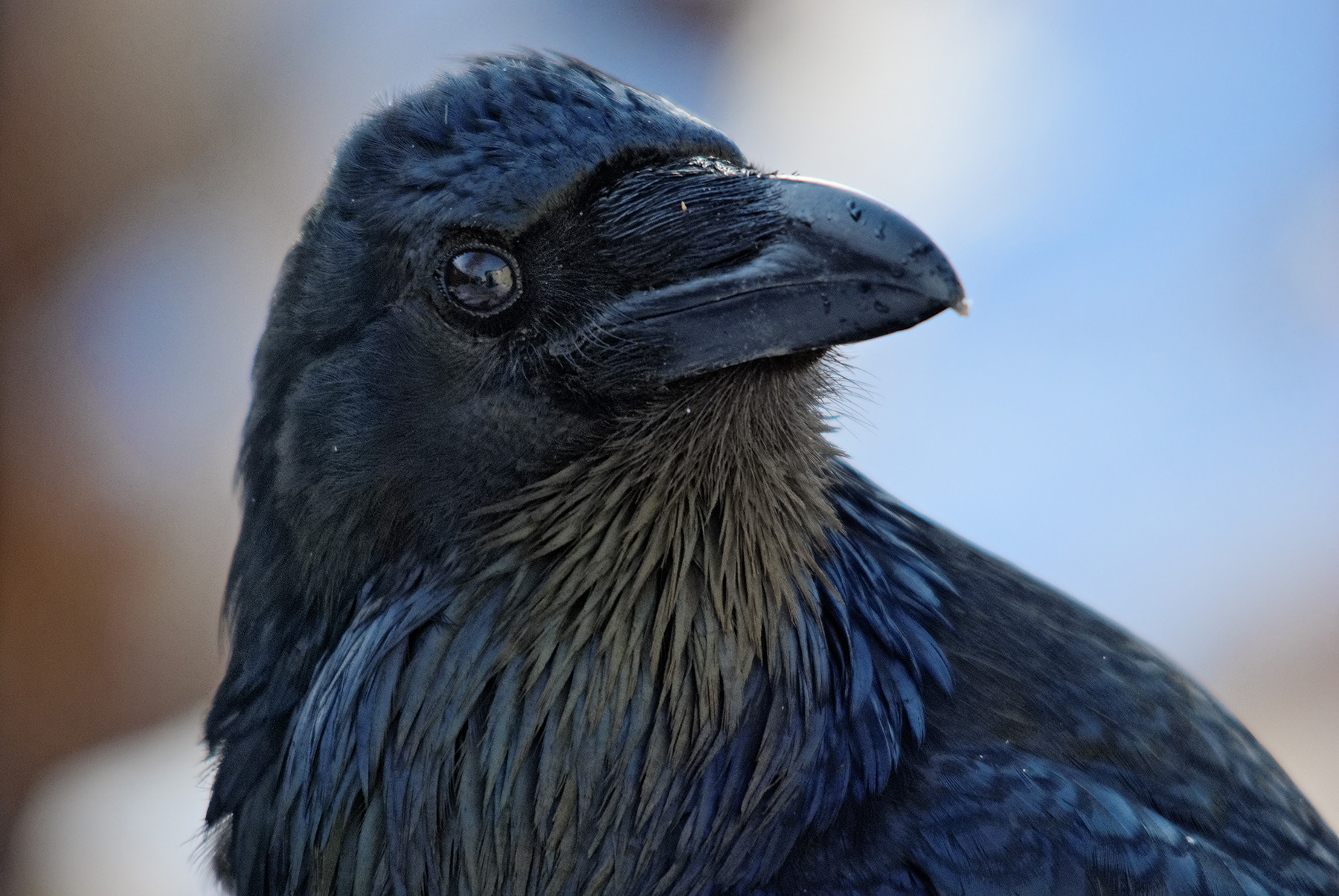
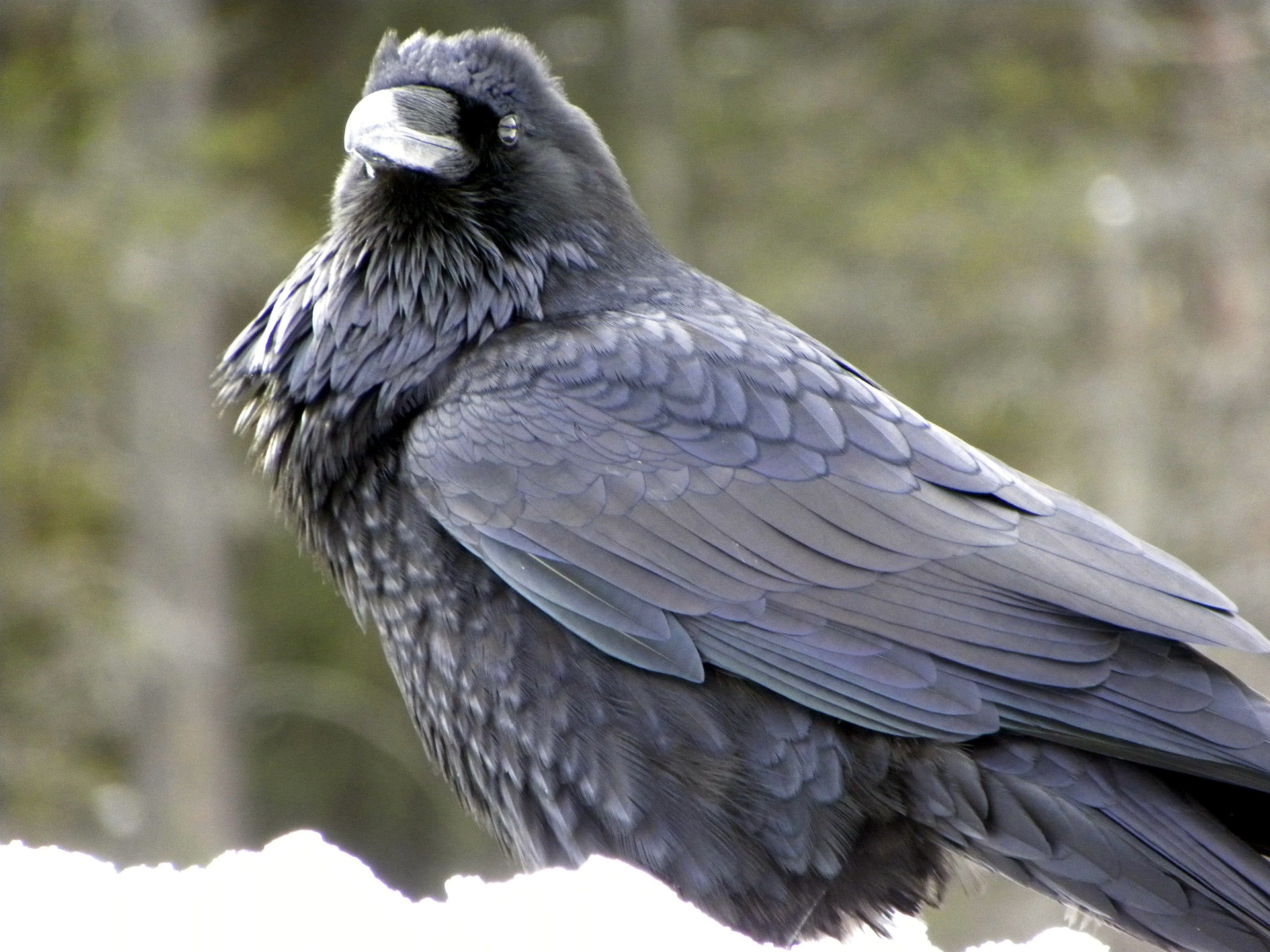

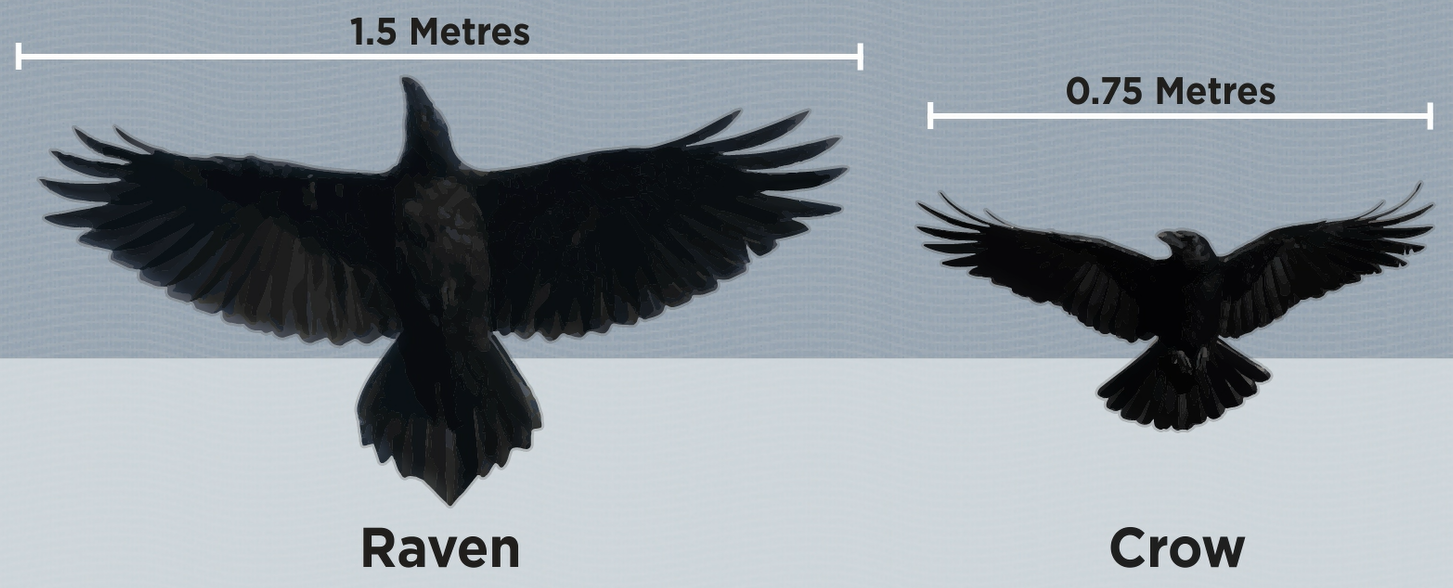
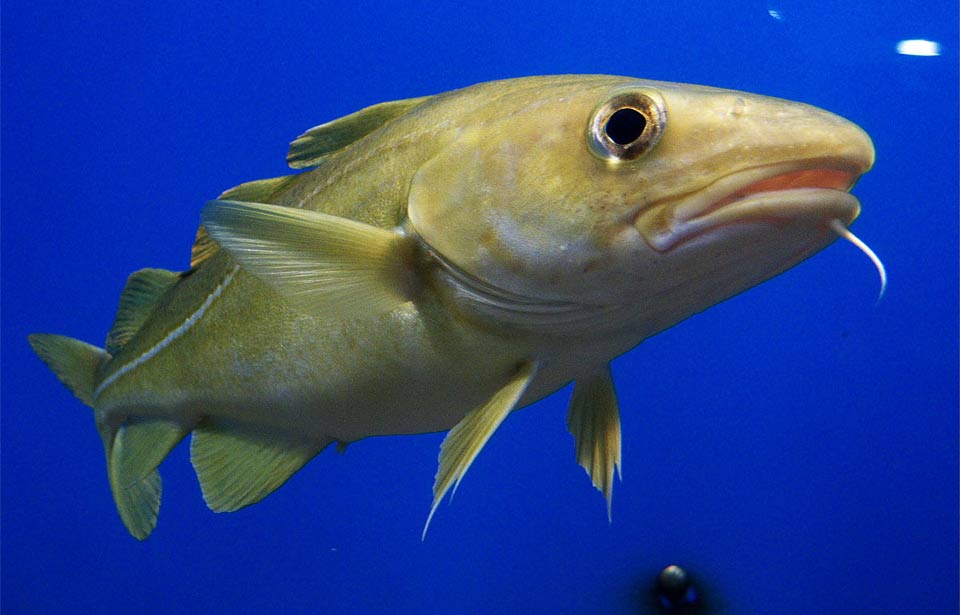
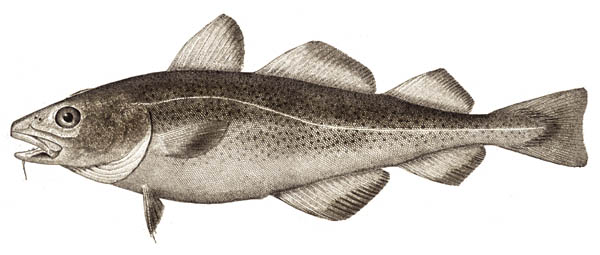 The Atlantic Cod (Gadus morhua) is a medium to large saltwater fish: generally averaging two to three kilograms in weight and about 65 to 100 centimetres in length, the largest cod on record weighed about 100 kg and was more than 180 cm long! Individuals living closer to shore tend to be smaller than their offshore relatives, but male and female cod are not different in size, wherever they live.
The Atlantic Cod (Gadus morhua) is a medium to large saltwater fish: generally averaging two to three kilograms in weight and about 65 to 100 centimetres in length, the largest cod on record weighed about 100 kg and was more than 180 cm long! Individuals living closer to shore tend to be smaller than their offshore relatives, but male and female cod are not different in size, wherever they live.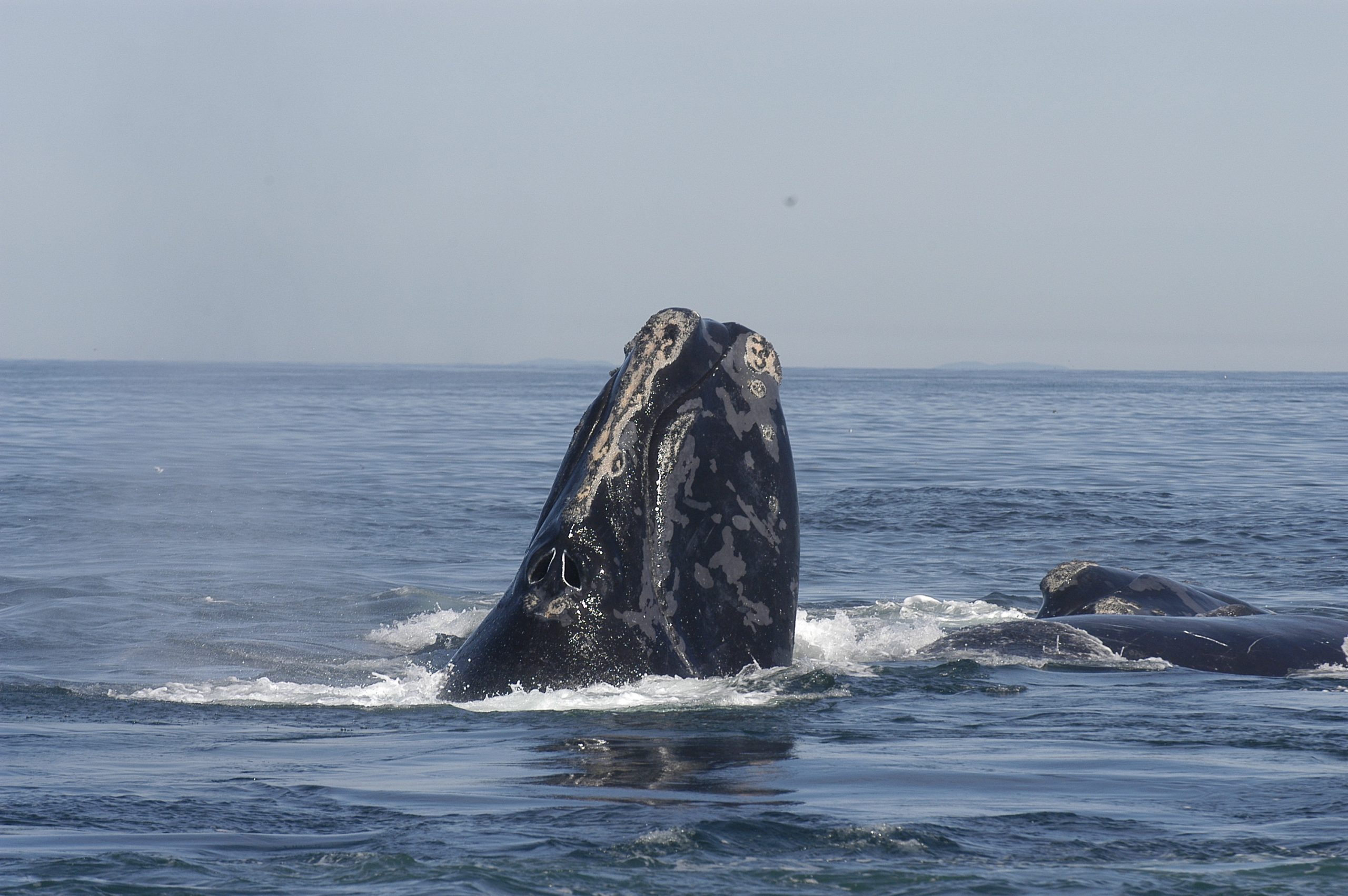
 The North Atlantic Right Whale (Eubalæna glacialis) is one of the rarest of the large whales. It can weigh up to 63,500 kilograms and measure up to 16 metres. That’s the length of a transport truck and twice the weight! Females tend to be a bit larger than males – measuring, on average, one metre longer. Considering its weight, it’s fairly short, giving it a stocky, rotund appearance. Its head makes up about a fourth of its body length, and its mouth is characterized by its arched, or highly curved, jaw. The Right Whale’s head is partially covered in what is called callosities (black or grey raised patches of roughened skin) on its upper and lower jaws, and around its eyes and blowhole. These callosities can appear white or cream as small cyamid crustaceans, called “whale lice”, attach themselves to them. Its skin is otherwise smooth and black, but some individuals have white patches on their bellies and chin. Under the whale’s skin, a blubber layer of sometimes more than 30 centimetres thick helps it to stay warm in the cold water and store energy. It has large, triangular flippers, or pectoral fins. Its tail, also called flukes or caudal fins, is broad (six m wide from tip to tip!), smooth and black. That’s almost the same size as the Blue Whale’s tail, even though Right Whales are just over half their size. Unlike most other large whales, it has no dorsal fin.
The North Atlantic Right Whale (Eubalæna glacialis) is one of the rarest of the large whales. It can weigh up to 63,500 kilograms and measure up to 16 metres. That’s the length of a transport truck and twice the weight! Females tend to be a bit larger than males – measuring, on average, one metre longer. Considering its weight, it’s fairly short, giving it a stocky, rotund appearance. Its head makes up about a fourth of its body length, and its mouth is characterized by its arched, or highly curved, jaw. The Right Whale’s head is partially covered in what is called callosities (black or grey raised patches of roughened skin) on its upper and lower jaws, and around its eyes and blowhole. These callosities can appear white or cream as small cyamid crustaceans, called “whale lice”, attach themselves to them. Its skin is otherwise smooth and black, but some individuals have white patches on their bellies and chin. Under the whale’s skin, a blubber layer of sometimes more than 30 centimetres thick helps it to stay warm in the cold water and store energy. It has large, triangular flippers, or pectoral fins. Its tail, also called flukes or caudal fins, is broad (six m wide from tip to tip!), smooth and black. That’s almost the same size as the Blue Whale’s tail, even though Right Whales are just over half their size. Unlike most other large whales, it has no dorsal fin.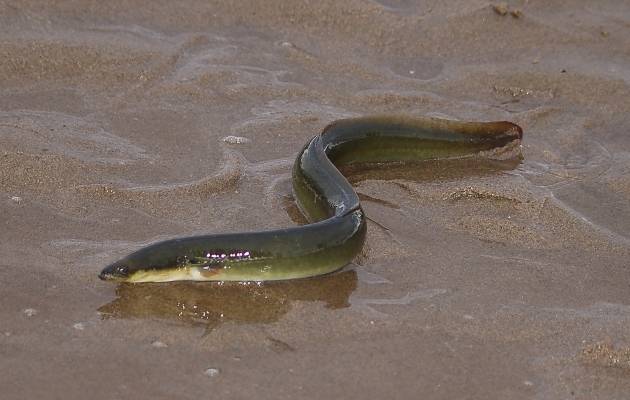
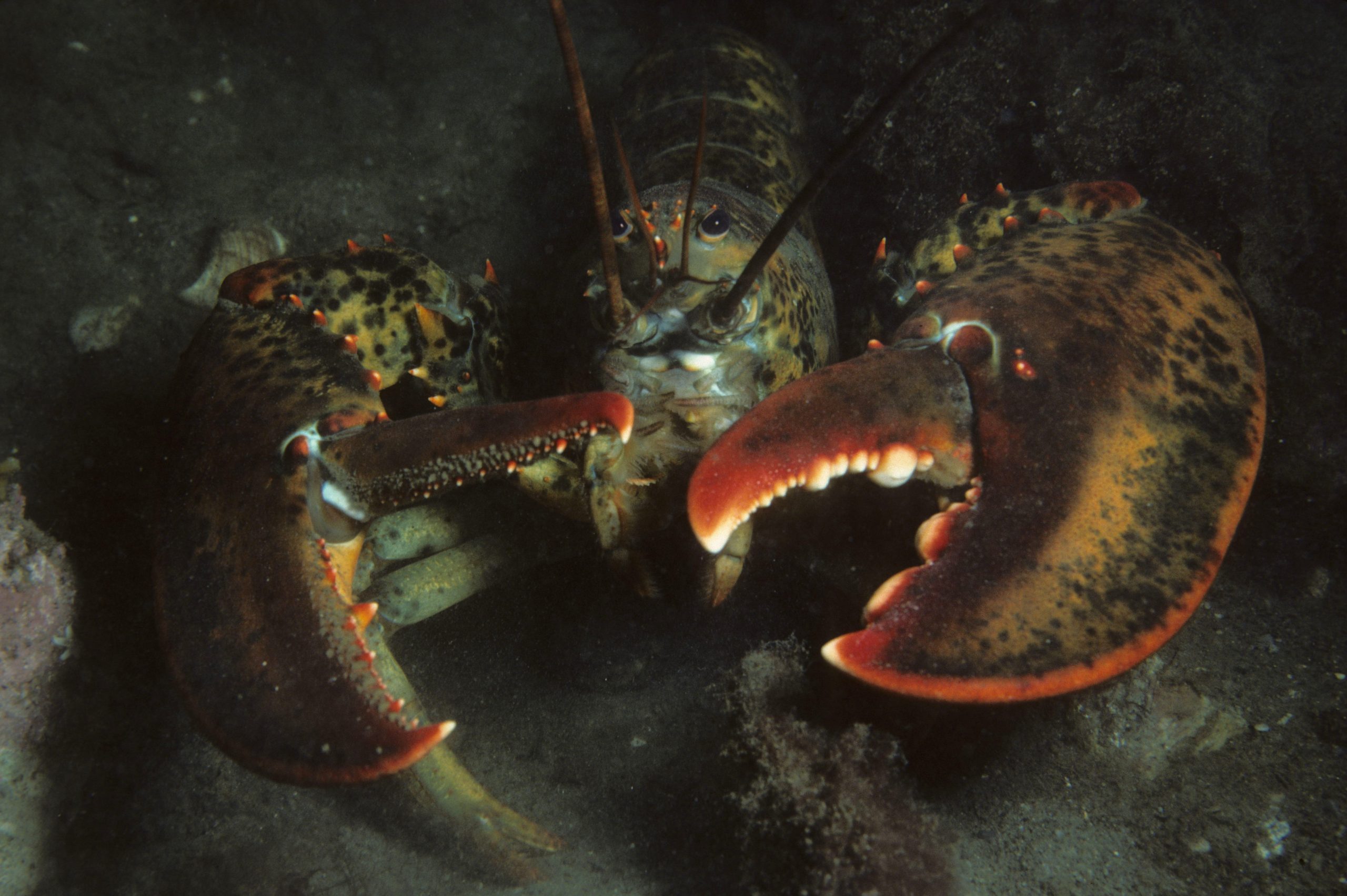


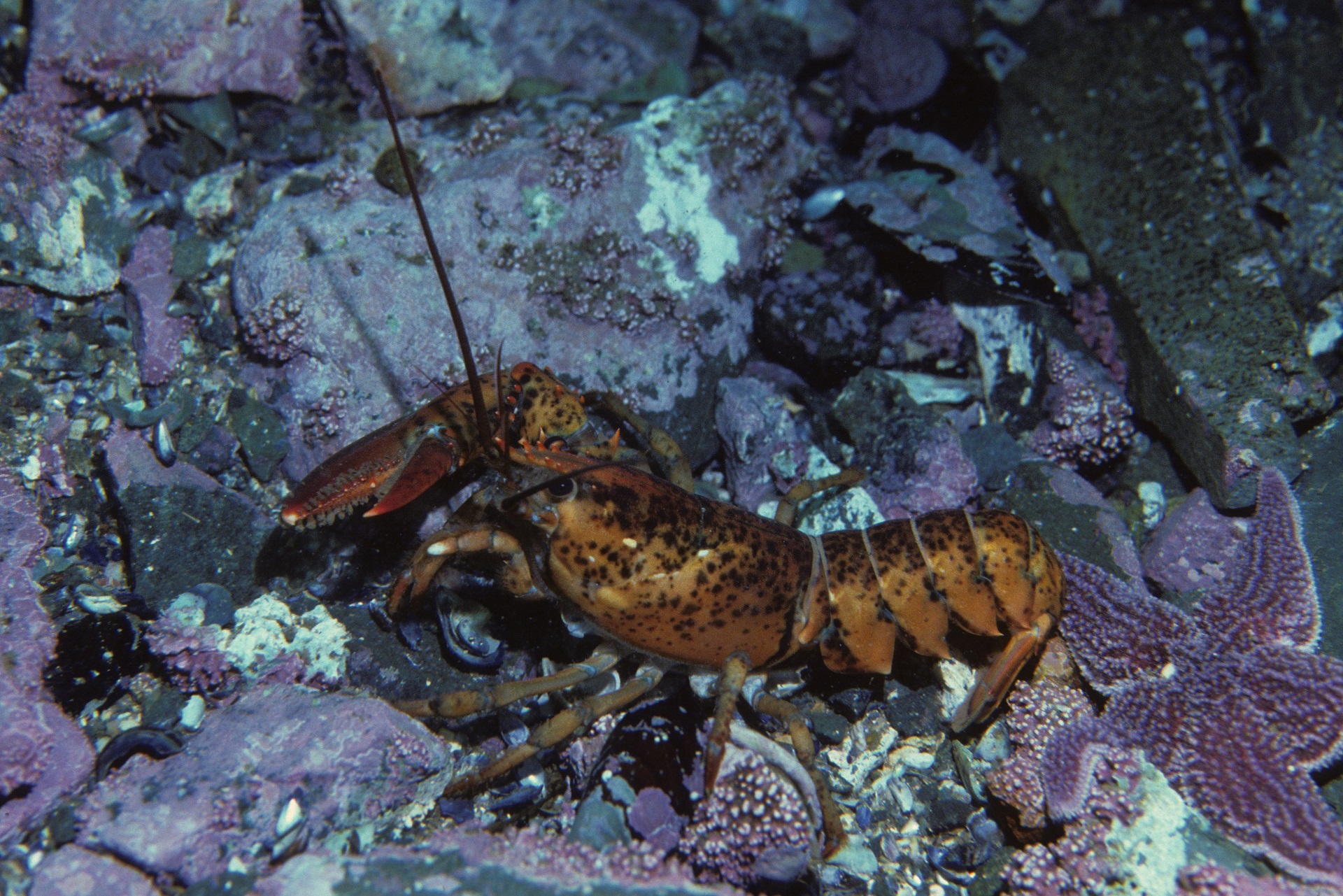
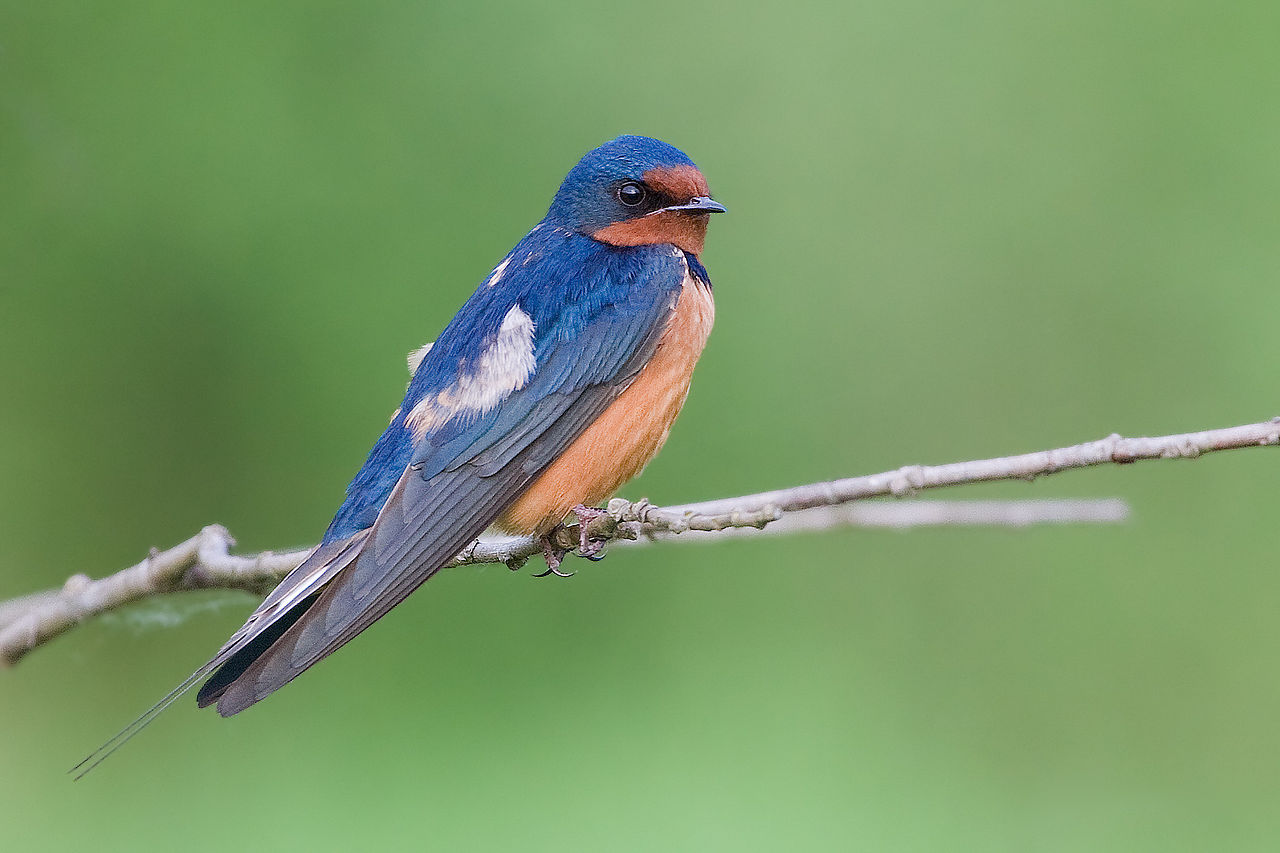

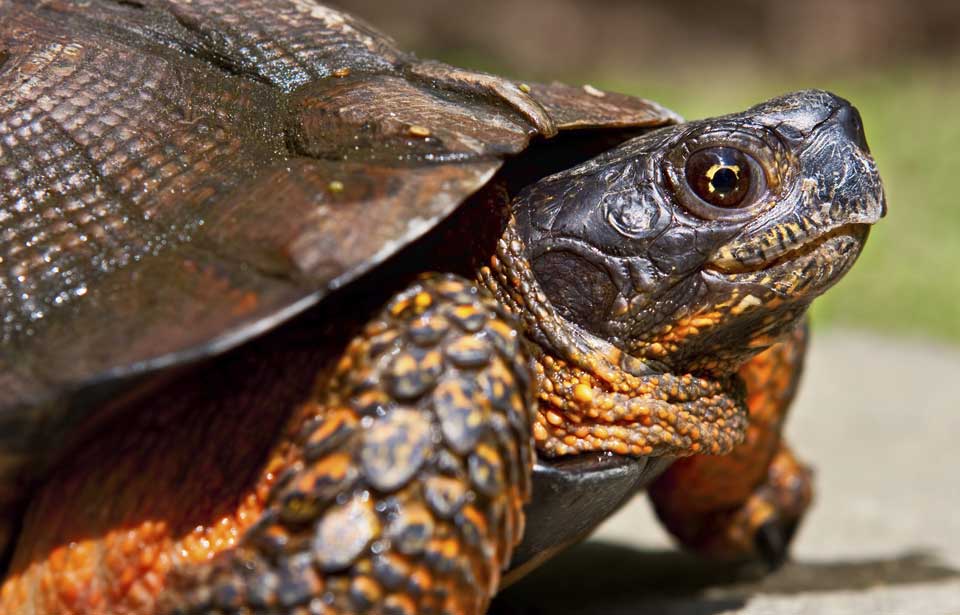
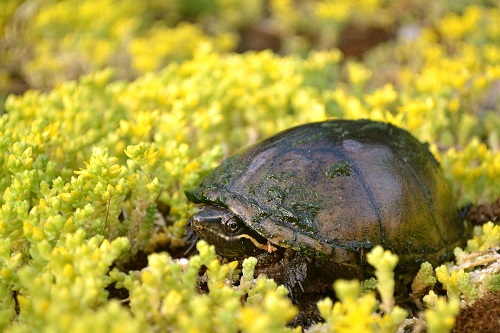

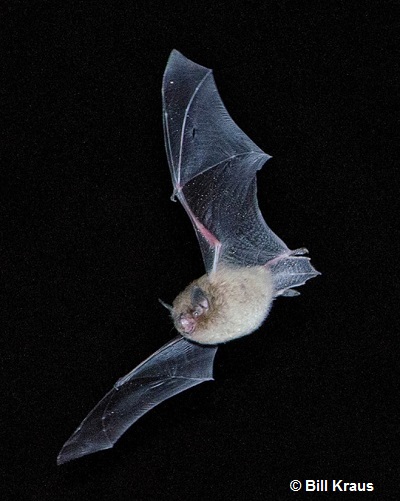

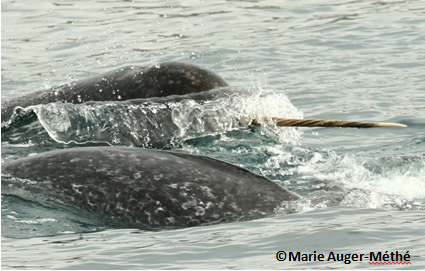
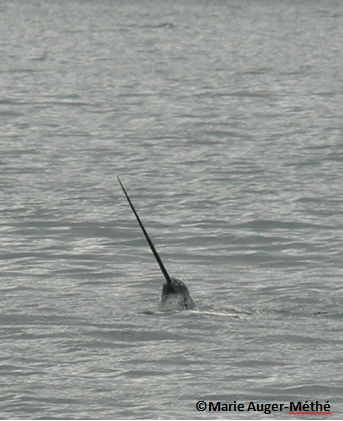
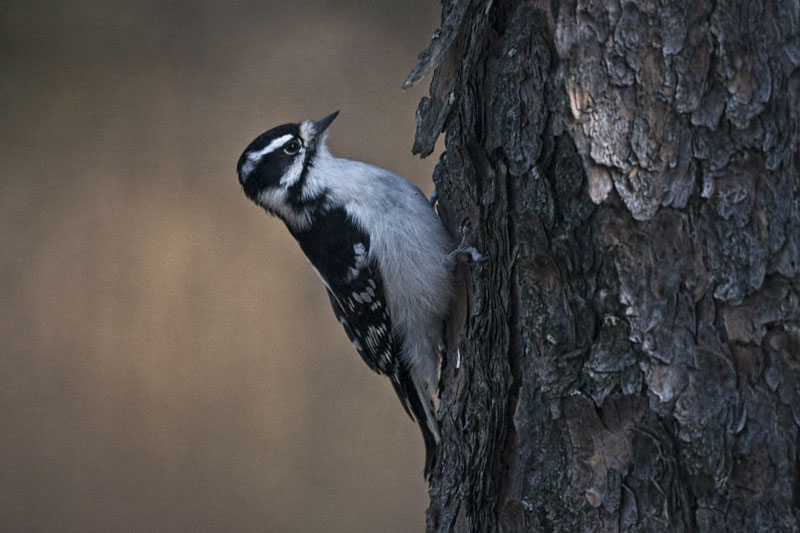

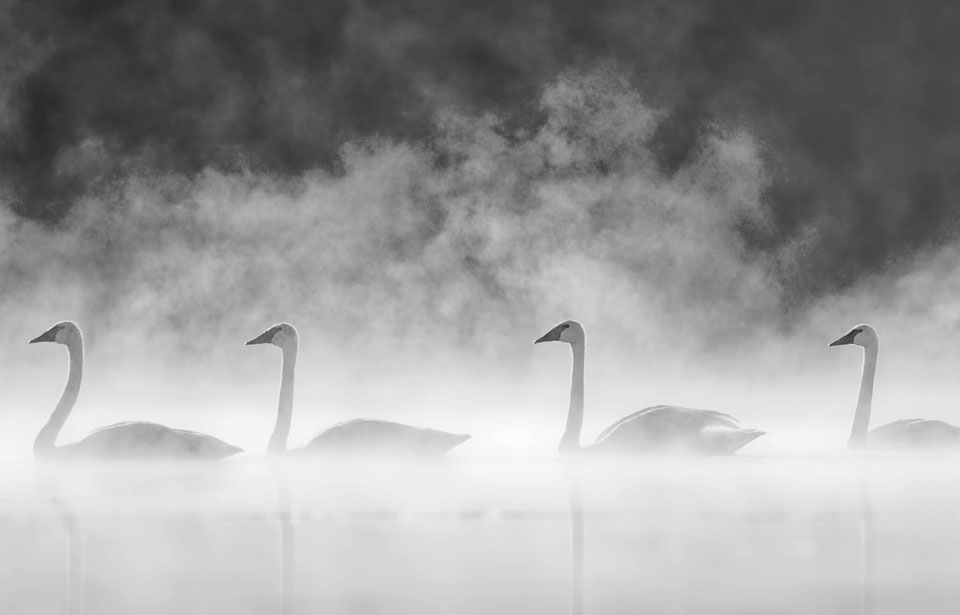
 Adult Trumpeter Swans Cygnus buccinator are large birds with white feathers and black legs and feet. The feathers of the head and the upper part of the neck often become stained orange as a result of feeding in areas rich in iron salts. The lack of colour anywhere on the swans’ bodies distinguishes them from other white species of waterfowl, such as snow geese, which have black wing tips.
Adult Trumpeter Swans Cygnus buccinator are large birds with white feathers and black legs and feet. The feathers of the head and the upper part of the neck often become stained orange as a result of feeding in areas rich in iron salts. The lack of colour anywhere on the swans’ bodies distinguishes them from other white species of waterfowl, such as snow geese, which have black wing tips.